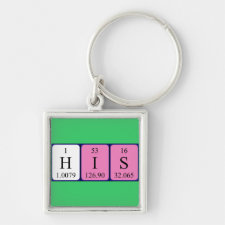
Authors: Zhang TL, Liu F, Chen W, Wang J, Li K
Article Title: Influence of intramolecular hydrogen bond of templates on molecular recognition of molecularly imprinted polymers.
Publication date: 2001
Journal: Analytica Chimica Acta
Volume: 450
Issue: (1-2)
Page numbers: 53-61.
DOI: 10.1016/S0003-2670(01)01390-3
Alternative URL: http://144.206.159.178/FT/38/46647/831222.pdf
Abstract: Three molecularly imprinted polymers (MIPs) were prepared corresponding to three structurally related template compounds 4-hydroxybenzoic acid (4-HBA), gentisic acid (GA) and salicylic acid (SA) that differ in intramolecular hydrogen bonding ability using acrylamide (AA) as a functional monomer. HPLC method was used to evaluate the binding performances of the MIPs to the templates and several analogues. The results showed that the difference in their molecular recognition ability was pronounced. The highest molecular recognition ability was observed for 4-HBA-imprinted polymer. It was proved that the hydrogen bond interaction between the functional monomer and the template (4-HBA) played a major role in the recognition process and Scatchard analysis showed that two classes of binding sites were formed in 4-HBA-imprinted polymer. Their dissociation constants were estimated to be 1.76 x 10(-4) and 1.40 x 10(-3) mol l(-1), respectively. But for GA- or SA- imprinted polymer the molecular recognition ability was not improved compared to the blank polymer (BP). By comparison of the structures of the three templates, it was concluded that the molecular recognition ability will decrease when the template itself is able to form intramolecular hydrogen bond in the molecular imprinting process. This study will be helpful for us to understand the molecular recognition mechanism of MIPs and of instructive significance for the prediction of the selectivity of MIPs. (C) 2001 Elsevier Science B.V. All rights reserved
Template and target information: 4-hydroxybenzoic acid, 4-HBA, gentisic acid, GA, 2-hydroxybenzoic acid, salicylic acid, SA



Join the Society for Molecular Imprinting

New items RSS feed
Sign-up for e-mail updates:
Choose between receiving an occasional newsletter or more frequent e-mail alerts.
Click here to go to the sign-up page.
Is your name elemental or peptidic? Enter your name and find out by clicking either of the buttons below!
Other products you may like:
 MIPdatabase
MIPdatabase









